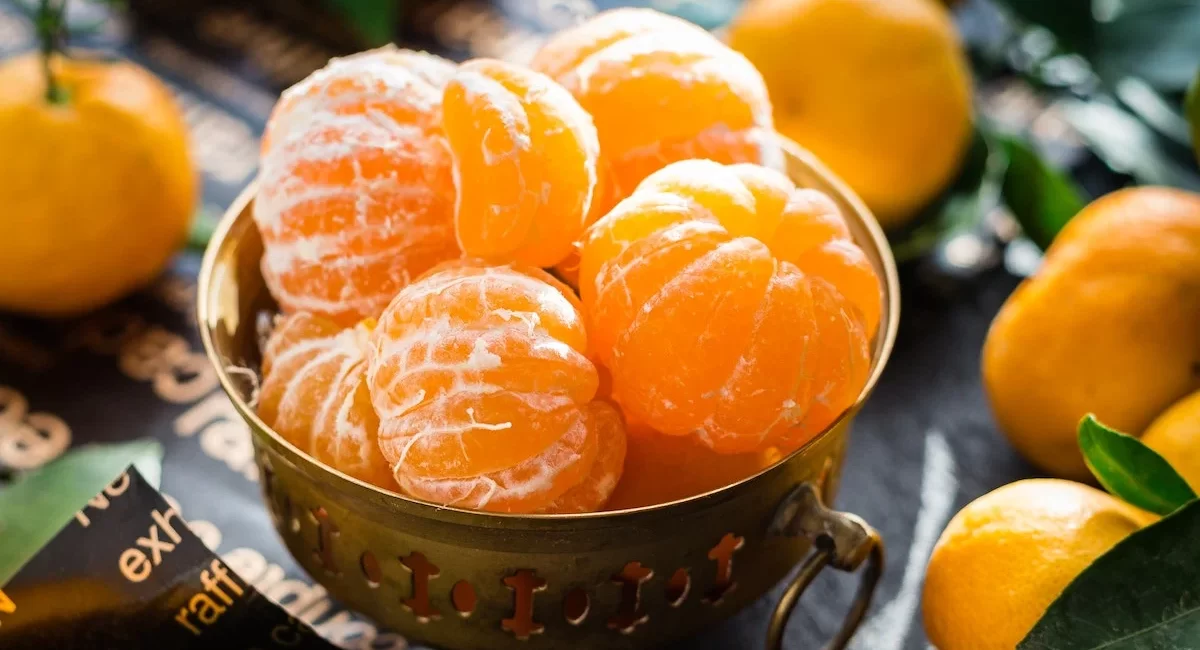Kinnow Fruit – Development & Evolution in Pakistan
Kinnow fruit, also known as Kinnow Mandarin, is a hybrid citrus fruit that originated in Pakistan. This juicy fruit is a cross between two citrus varieties, King Mandarin and Willow Leaf Mandarin. Kinnows are sweet, easy to peel, and seedless, making them a popular choice for juice extraction.
In this article, we will delve into the history of Kinnow, how it was developed in Pakistan, and why it is one of the most successful citrus crops in the country. We will also explore the health benefits and nutritional value of Kinnows, how to cultivate and store them, and answer some frequently asked questions.
History of Kinnow Fruit
The Kinnow was first developed in the 1940s by Dr. H.B Frost at the Citrus Research Institute in California, USA. He crossed two citrus varieties, King Mandarin and Willow Leaf Mandarin, to create a new hybrid that combined the best traits of both fruits. The new hybrid was named ‘Kinnow.’
Development of Kinnow Fruit in Pakistan
The Kinnow hybrid was later brought to Pakistan in the early 1970s by the country’s Agricultural Research Council. They saw the potential of Kinnow as a commercial crop due to its high yield and quality fruit. Since then, Kinnow has become one of the most significant citrus crops in Pakistan, with an estimated annual production of 2 million tons.
Kinnow Fruit: A Successful Citrus Crop
Kinnow was first introduced in Pakistan in the early 1970s by the country’s Agricultural Research Council. They recognized the potential of Kinnow as a commercial crop due to its high yield and good quality fruit.
Initially, the Kinnow variety was cultivated in the Sargodha district of Punjab, which has a favorable climate and soil for citrus cultivation. The Kinnow orchards were planted on a large scale, and the fruit was soon recognized for its excellent flavor and high juice content.
With the passage of time, the Kinnow variety became more popular among Pakistani farmers due to its high yield and market demand. Farmers started cultivating Kinnow on a larger scale, and the fruit soon became one of the country’s most important export items.
Today, Kinnow fruit is widely cultivated in Pakistan, especially in the Punjab and Sindh provinces. The country is now the world’s largest producer and exporter of Kinnow , with an annual export volume of over 300,000 tons.
Health Benefits of Kinnow Fruit
Kinnow fruit is not only delicious but also rich in nutrients and health benefits. One medium-sized Kinnow contains approximately 40 calories, 1 gram of protein, and 10 grams of carbohydrates, making it a healthy snack option.
Kinnows are also rich in vitamin C, which is essential for maintaining a healthy immune system, skin, and bones. One medium-sized Kinnow fruit contains approximately 70% of the recommended daily intake of vitamin C.
In addition, Kinnows are a good source of dietary fiber, which helps to regulate digestion and maintain a healthy gut. They also contain potassium, which is essential for maintaining healthy blood pressure levels and heart health.
Nutritional Value of Kinnow Fruit
Kinnow fruit packs a powerful nutritional punch. In addition to its high vitamin C content, Kinnows are a good source of other essential vitamins and minerals. Here are some key nutrients found in Kinnow fruit:
- Vitamin A: Kinnows contain vitamin A, which is important for maintaining healthy vision and promoting proper immune function.
- Vitamin B6: Kinnows are a good source of vitamin B6, which plays a vital role in brain development and function, as well as the production of red blood cells.
- Calcium: Kinnows contain calcium, which is essential for maintaining strong bones and teeth.
- Magnesium: Kinnows provide magnesium, an important mineral that contributes to overall heart health and helps regulate blood pressure.
Cultivation of Kinnow Fruit
Cultivating Kinnow requires a warm and humid climate with plenty of rainfall. The fruit grows best in well-drained, fertile soil that is rich in organic matter. The ideal pH level for cultivating Kinnow is between 6.0 and 7.5.
Best Time to Plant Kinnow Trees
The best time to plant Kinnow trees is in late winter or early spring, typically between January and March. This is the ideal time because the trees are dormant, and the weather is cooler, allowing the trees to establish their roots without being stressed by high temperatures.
Planting in the cooler months also helps to prevent water loss, which is crucial for the young trees. When planting Kinnow trees, it’s important to keep in mind that they require well-draining soil and plenty of sunlight.
Tips for Planting Kinnow Trees
Here are some helpful tips for planting Kinnow trees:
- Choose a location with full sunlight: Kinnow trees require plenty of sunlight to grow and produce fruit. Choose a location that receives at least 6-8 hours of sunlight each day.
- Ensure well-draining soil: Kinnow trees require well-draining soil to avoid root rot. If your soil doesn’t drain well, you can amend it by adding sand or other organic material.
- Plant at the right depth: When planting your Kinnow trees, make sure they are planted at the same depth they were in their nursery pots. Planting too shallow or too deep can stunt the growth of the tree.
- Water regularly: Young Kinnow trees require regular watering to establish their roots. Water them deeply once or twice a week, depending on your climate.
- Fertilize appropriately: Kinnow trees require regular fertilization to produce healthy fruit. Use a citrus-specific fertilizer and follow the instructions carefully.
Storage and Preservation of Kinnow Fruit
After harvesting, it’s important to store Kinnow fruit properly to maintain its freshness and flavor. Here are some guidelines for storing Kinnows:
- Store at room temperature: Kinnows can be stored at room temperature for several days. However, they should be consumed within a week to enjoy their peak flavor.
- Refrigerate for extended storage: If you want to prolong the shelf life of Kinnow fruit, place them in the refrigerator. They can last for up to two weeks when refrigerated.
- Avoid exposure to moisture: Kinnows should be kept dry to prevent mold growth. Make sure to remove any damaged or spoiled fruits to prevent them from spoiling the rest.




Leave a Comment